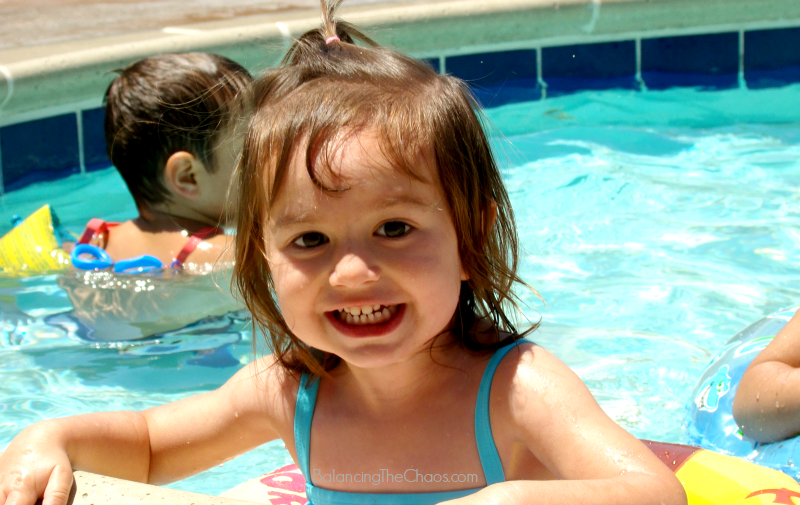Now that spring and summer are around the corner, we’re heading out to the back yard for some serious pool time. While our kids are finally able to swim, we can never be too safe when it comes to having a pool in the back yard! Water safety is of the up most importance!

When the kiddos were really little and we went to playgroups, the kids usually went into small plastic kiddie pools. As they got bigger, the pools got bigger and moms got more nervous. Water accidents can happen so quickly!

I recall one incident with my friends – in the pool above featured in the above pictures. My princess was approximately 2 years old when we met for a pool playdate. In this complex there is a toddler wading pool that is only 1 1/2 feet deep. I had my princess on one side of me as she was in the water, I was sitting on the side of the pool. My friend’s son was on the other side of me holding onto my leg. He was the same age of my princess. It happened so quickly, he slipped. As I reached in to gram him, my princess went under the water on the other side of me.

US Swim School Association Provides Tips to Help Prevent Drowning. Preeminent swim school organization advises parents to begin water safety with kids at 6 months
One of the leading causes of death in the United States: DROWNING. On average, 3,533 people die as a result of drowning each year, and most of those deaths are children under the age of four who drown in backyard swimming pools.
You hear it all the time: keeping children under constant supervision. Like the incident I mentioned above, I was sitting right there with them. It happens so fast, to walk away to grab anything could be fatal. Important precations should be taken when around a pool:
- Enroll children in swimming lessons
- Know CPR; CPR on a child
- Pool fences and barriers should be installed
- In addition to these vital steps, USSSA has created a list of tips parents can use to build extra layers of protection for their children around water.

Drowning Prevention & Water Safety Tips:
- Create a verbal cue for your toddler or child that must be given by you before he or she can enter the pool.
- Never allow your baby/toddler in the pool without a swim diaper.
- Create a process the child must go through before entering a pool such as putting on a swim diaper, a swimsuit and applying sunscreen.
- Never use floatation devices or water wings when swimming or when teaching kids to swim.
- Children should learn to swim without goggles. Teach your children to open their eyes under water; if they fall in they can find the side of the pool or a step and get out safely.
- For very young children practice having them put their entire face under water in the bathtub and blow bubbles to build their comfort with water.
- Create a water safety plan for your family and have water emergency drills with your kids covering how to recognize the signs of someone struggling in water and what to do in this type of emergency.
- Make sure your guests and kids’ friends know your pool rules before they go outside and get in the pool.
- Start swim lessons at 6 months of age and continue them year-round at a US Swim School member location.
- Always make sure your children wear life jackets on boats, personal watercraft and in open bodies of water.
For more information on USSSA, details on becoming a member of the nation’s leading swim school organization, or to find a USSSA affiliated swim school near you, visit: usswimschools.org. (These stats were originally published July 2014)
About US Swim School Association:
US Swim School Association (USSSA) began in 1988 to fill a gap in the swim school industry. USSSA has become the largest and preeminent swim school association in the country with over 400 members providing swim and water safety instruction to over 500,000 students each year. Swim schools receive invaluable benefits as USSSA members, receiving the latest training in water safety, swim instruction methods and tools, invitations to annual conferences, and many other benefits that help establish and build each individual business. Through USSSA, parents and students are provided with a reliable and trustworthy resource when searching for a swim school and can rest assured they have chosen a top school when they choose a USSSA affiliated location. For more information, visit www.usswimschool.org.




